Disclosure: We may get commissions for purchases made through links in this post.
Giving your flagstone hardscape a new look seems like a good idea. Admittedly, many homeowners use flagstones because of their naturally beautiful color. However, spicing up your flagstones by changing their color sounds exciting especially when they have been there for long. But you may wonder, can you stain flagstones? And how to do it? Here is what we discovered after gathering useful information for you.
Fortunately, flagstones can be stained. Keep in mind that staining stone will only darken the color; it will not brighten a dark-colored stone. Moreover, you can stain flagstone using these two methods:
- Using water-based stain
- Using acid-based stain
Continue reading to learn how to stain flagstones and how to maintain them after staining.
![Twilight view of a back yard with fire pit and flagstone paver, Can Flagstone Be Stained? [And How]](https://pavingplatform.com/wp-content/uploads/2022/03/Can-Flagstone-Be-Stained-And-How.png)
What Tools Do You Need?
You'll need these tools in staining your flagstones:
- Stiff wire brush
- Damp rag
- Stone stain
- Spray bottle (plastic)
- Bristle paintbrush (large)
- Plastic bucket (large)
- Nylon scrub brush
- Power spray (optional)
- Sealant
How Do You Stain Flagstone?
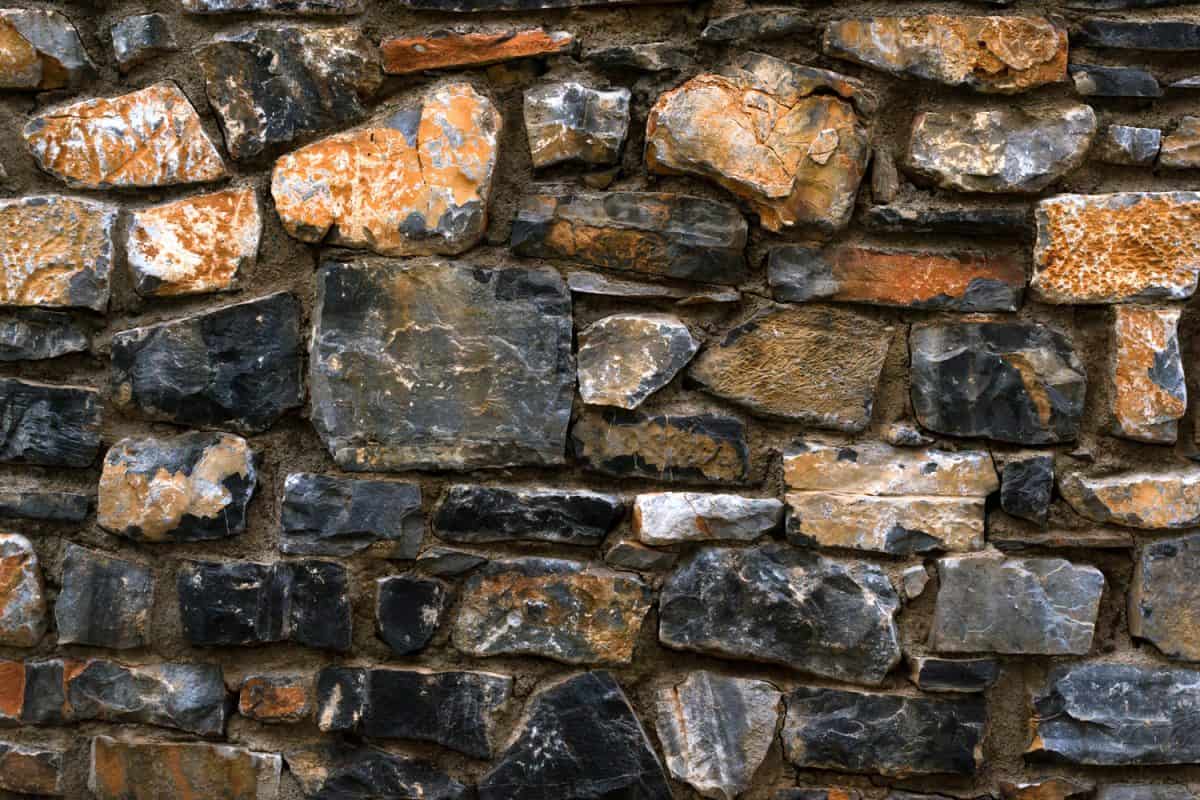
Staining flagstones has different approaches depending on the type of product you're going to use. As mentioned, there are two methods you can use to stain your flagstones: water-based staining and acid-based staining.
Note that using different products means having different staining methods to follow.
Cleaning- First Step To Staining
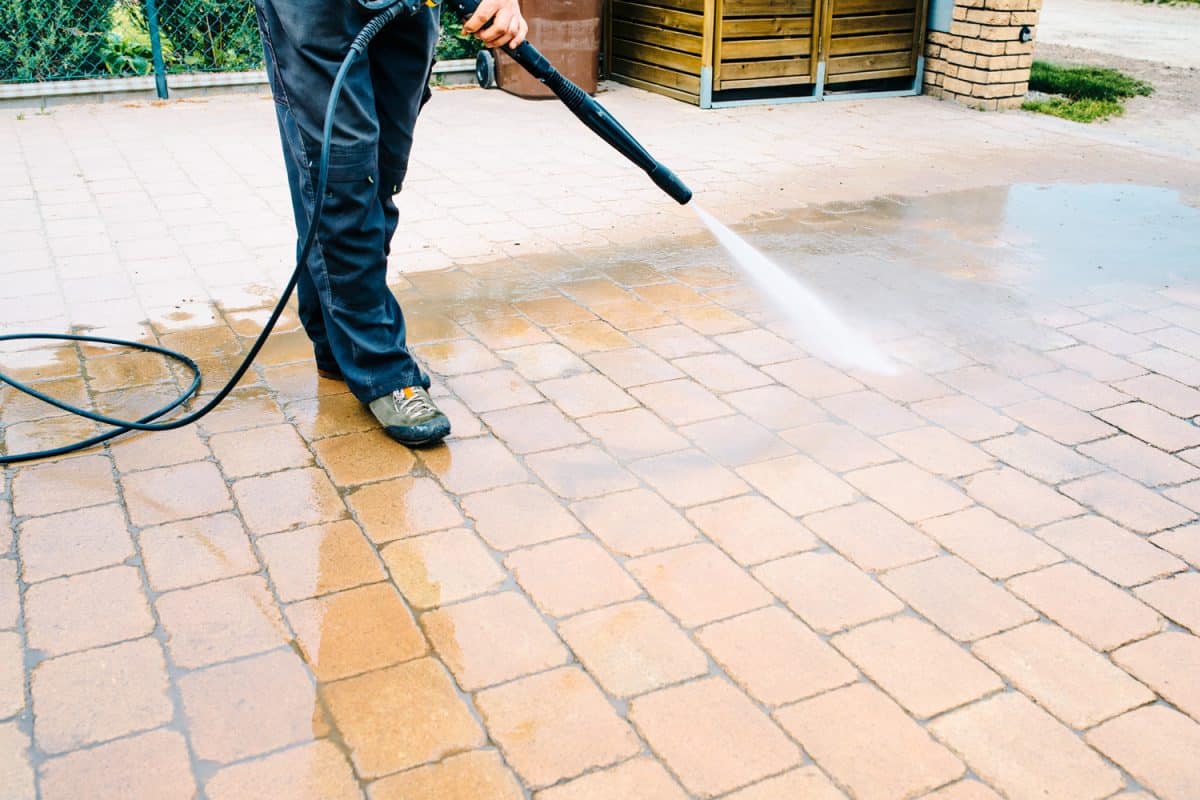
The first step in staining flagstones, regardless of the product you use, is cleaning them. This is true to all the methods mentioned above. So, what is the proper way to clean flagstones? Here are a few simple steps you can follow:
Using a hard wire brush, clean the stone
With a scrubbing brush, brush the entire area of your decorative stone. Pay special attention to any dusty or dirty places, as well as any debris accumulation. Remember, if you don't clean your stones before staining, it would only come off easily because the dirt absorbed all the stains, not the stone itself.
For stones situated inside, wipe them using moist rags
After you've finished cleaning the stone with the brush, wipe it down with a wet rag to remove any remaining dirt and debris. After that, leave the stone to dry for an hour.
For outdoor stones, use a pressure washer
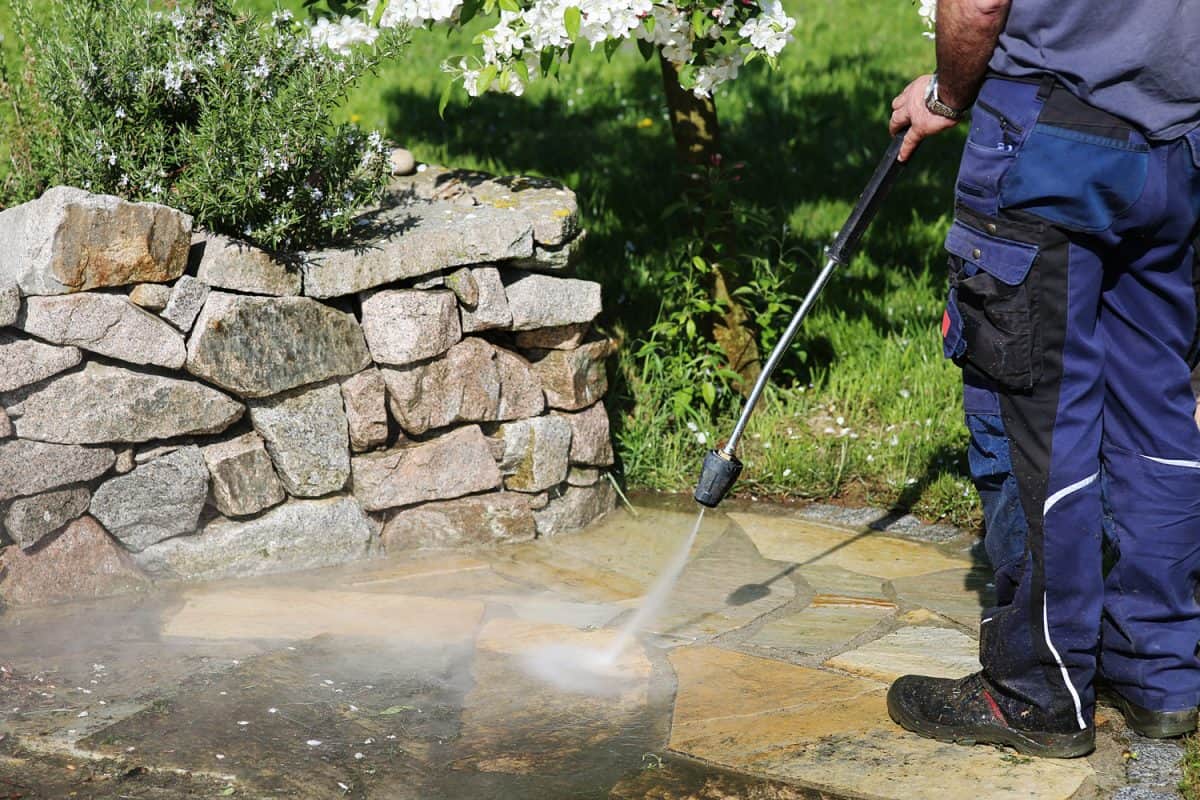
You can use a pressure washer to wipe off external decorative stone without having to touch it. All of the filth and grime should be easily removed with pressure washing. For hard-to-reach areas, you can use a stiff brush and hose it down to remove dirt.
Another option to clean outdoor stones is by using a stiff brush. After brushing, you can splash a bucket of water to wash away the dirt.
Method 1: Using Water-Based Stain
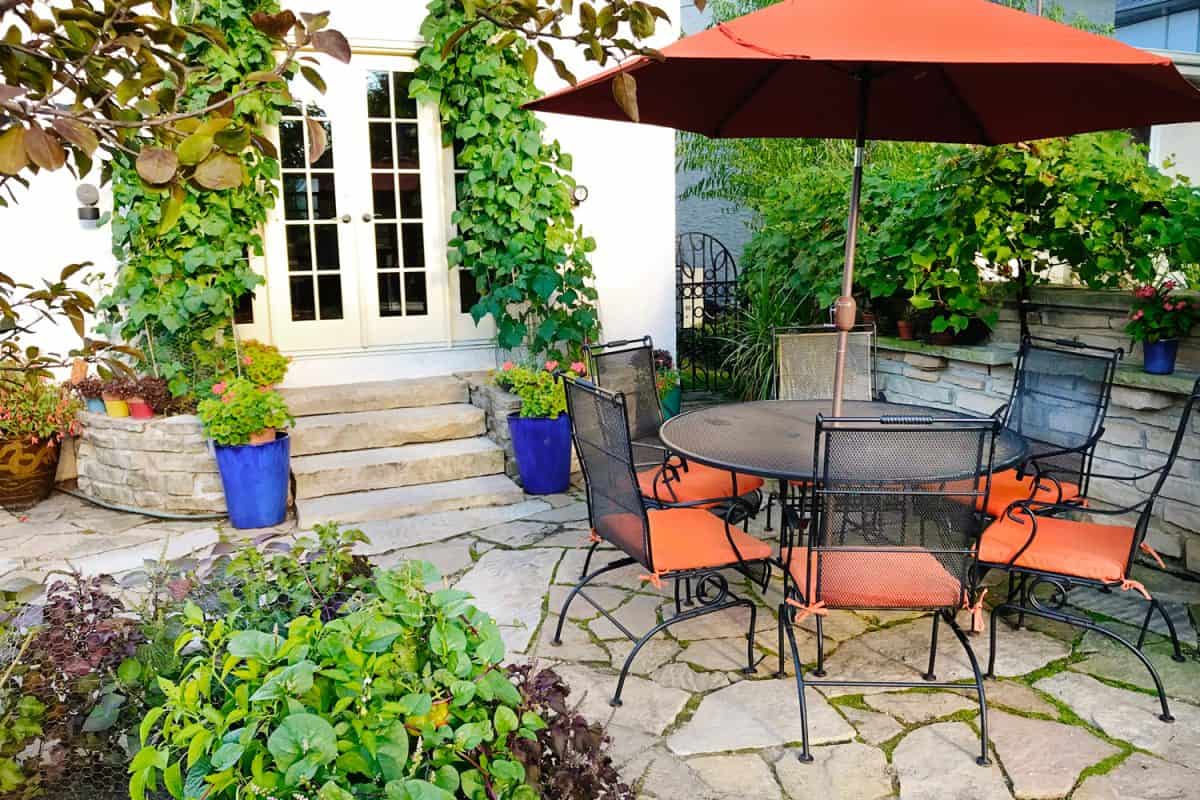
1. Choose a stain color
Water-based stains come in many different colors. Consider the hue, type, and texture that will complement your flagstone before choosing a color. Make sure that your stain is specifically labeled for use on stone. Stone should never be stained with wood stain.
2. Pour stain into a spray bottle
If you're painting a large area of stonework, especially if it's outside, it's advisable to put the stone stain in a plastic spray bottle. Use a funnel if required to avoid spilling the stain.
3. Spray the stain into a tiny area at a time
Apply a thick, uniform coat of stain to around one foot of the stone at a time. Spray one at a time if your hardscape is made up of large stones with mortar between them. To avoid an uneven appearance, don't forget to stain the mortar.
4. Work the stain into the stone using a bristle brush
Work the solution into the stone with a bristle brush. Move the brush in a circular motion to set the stain deeper into the stone. To keep the stone looking natural, smooth away any apparent spray lines from when the spray was sprayed.
5. Dry the stain overnight
Before touching or sealing the stone, the stain must work its way into the stone and dry. Allow at least 8-10 hours for the stone to dry.
6. Apply a second coat (Optional)
Most of the time, a single coat of stain is enough to alter the color of each stone section. Apply a second layer, using the same methods as the first, if you want a darker, more prominent color.
To avoid visible lines, overlap your coat by about one inch when staining from section to section.
Method 2: Using Acid-Based Stain
1. Choose a stain color
Acid stains also come in a wide range of tones. If you want to add color and texture to your stone, you can use colored stains (e.g., green, red, yellow). Some acid stains are labeled for concrete. However, they can still be used for stones.
2. Pour stain into a spray bottle
Same with water-based stain, it's easy to use a plastic spray bottle to apply acid stain on stone. You can avoid getting stain on your hands by using safety gloves or pouring the stain through a plastic funnel.
If you're concerned about the acid reacting with the plastic, don't be; it's not corrosive enough to melt it.
3. Apply an even coat of acid stain to a 2-foot section of stone
Stain the stone with a thick, even coat of stain. If any spots are left uncovered after the stain has dried, they may seem discolored. Apply the stain in the same way you would a water-based stain on the mortar between the stones. The mortar will not be harmed by the acid stain.
4. Continuously work to achieve good visual results
Don't pause or take a break when staining a section. Stopping and allowing the stain to dry will result in an ugly line where the first layer of stain dried.
5. Dry the stain overnight
Allow 8–12 hours for the acid stain to set and deeply penetrate the stone. During this period, do not hold the stone surface. Cover the stone with a tarpaulin to shield it from rain and snow if it is exposed to the elements.
If the first coat did not meet the level of darkness you want to achieve, then you can apply a second layer. Then, let the second coat dry for 24 hours.
6. Apply baking soda and water to neutralize acid residue
To avoid eating through the stone, the acid-based stain must be neutralized. In a bucket, mix baking soda and water. Then, using a nylon scrub brush, apply the neutralizing mixture to the stained stone's surface.
Alternatively, ammonia can be used as a neutralizer. However, it should be handled with utmost care since is highly caustic.
Pro tip: Acid stains best work with porous flagstones like travertine and limestone. For harder stone types, use a water-based stain.
How Do You Maintain The Flagstones After Staining?
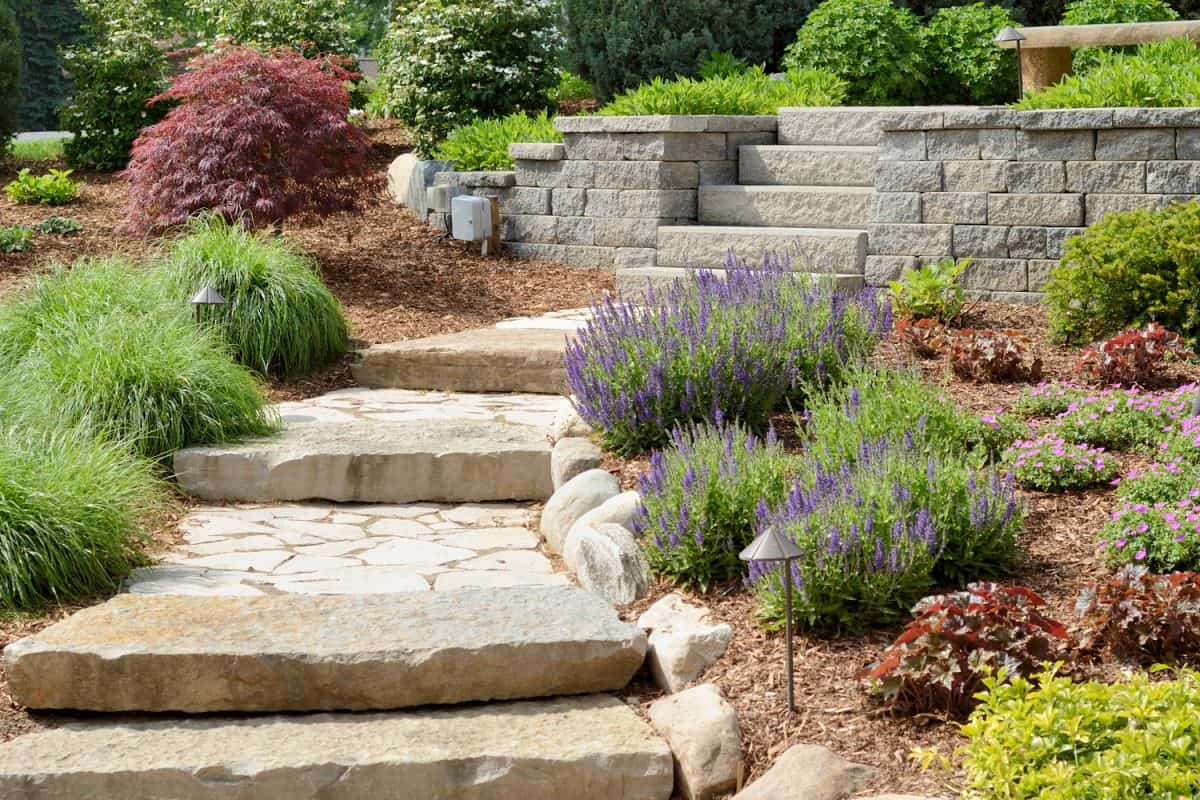
The most effective and commonly used way of protecting flagstones, or any hardscapes for that matter, is by sealing. A sealer is applied to prevent flagstones from deteriorating quickly. In addition, sealing flagstones also help in keeping their color and texture. Moreover, they keep your stones from dirt and water.
Click here for this sealer on Amazon.
Final Thoughts
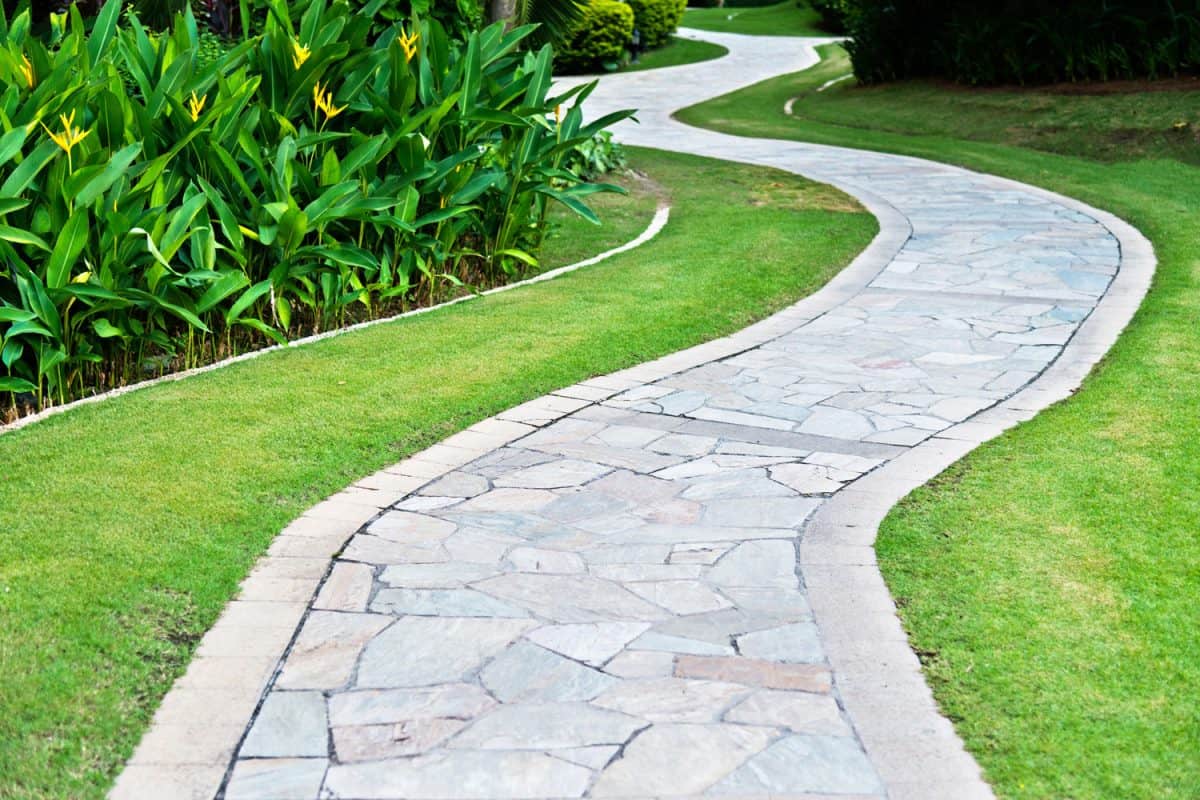
While flagstones have naturally attractive colors, you might want to change them up along the way. Staining is a simple way of enhancing your flagstone color and can help you achieve the makeover you want for your hardscape.
Before you go, check these articles that might help you with your next paving project:


![Vibrant Red Paver Stone Path, Can You Spray Paver Sealer? [How To Apply It]](https://pavingplatform.com/wp-content/uploads/2022/04/Vibrant-Red-Paver-Stone-Path-600x400.jpg)
![Properly laid out red pavers for a garden, Can You Tint Paver Sealer? [And How To]](https://pavingplatform.com/wp-content/uploads/2022/04/Properly-laid-out-red-pavers-for-a-garden-600x400.jpg)
